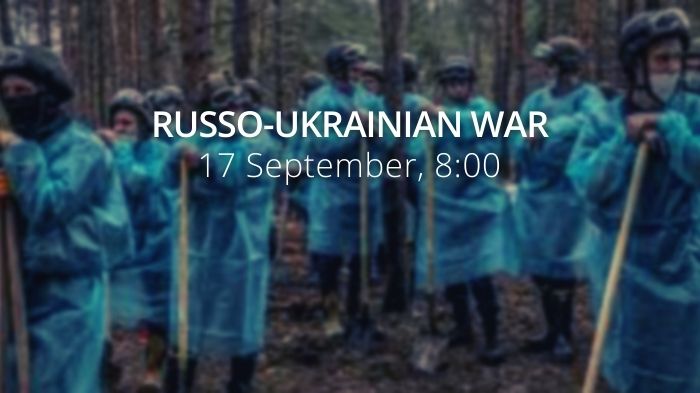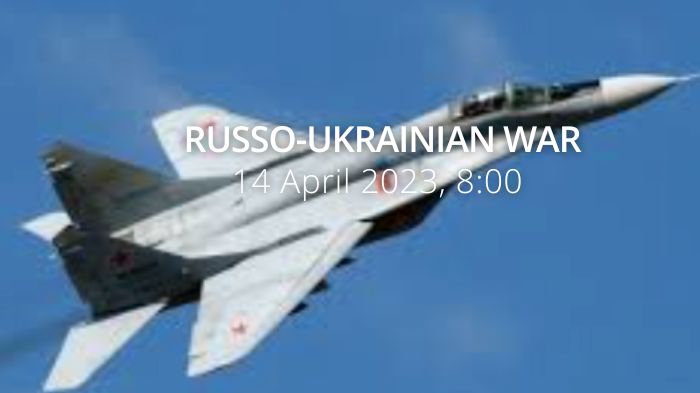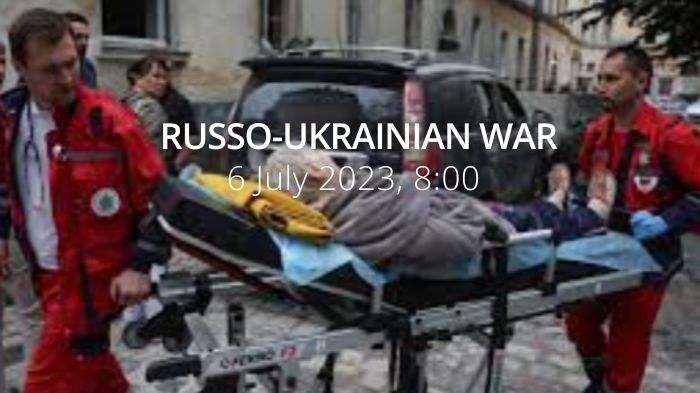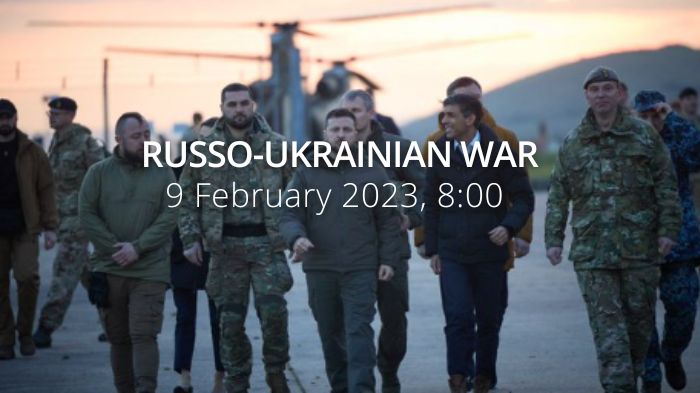Ukraine continues offensive operations in the northeast of the country. Bodies of Ukrainian soldiers with their hands tied found in Izium. Ten torture chambers were found in the liberated Kharkiv region. Belarus extends military training once more. “LNR Prosecutor General” assassination in Luhansk. Deputy puppet governor of Berdiansk killed along with wife responsible for preparations for “referendum.” Russian missiles hit hydraulic structures in Kryvyi Rih. Energoatom delivers 25 trucks with spare parts, chemicals and fuel to ZNPP. Pope says supplying weapons to Ukraine is morally acceptable for self-defence
39 journalists killed in Ukraine since the beginning of Russia's full-scale invasion – minister of culture and information policy
Today is the Day of Remembrance of Ukrainian Journalists marked in Ukraine every year on the third Friday of September.https://t.co/8blGCehOBS pic.twitter.com/zIvYeaxyP6
— Euromaidan Press (@EuromaidanPress) September 16, 2022
Daily overview — Summary report, September 17
A map of the approximate situation on the ground in Ukraine as of 00:00 17/09/22. pic.twitter.com/uYoRP3nF1K
— War Mapper (@War_Mapper) September 17, 2022
The General Staff’s operational update regarding the Russian invasion as of 06.00 am, September 17, 2022 is in the dropdown menu below.
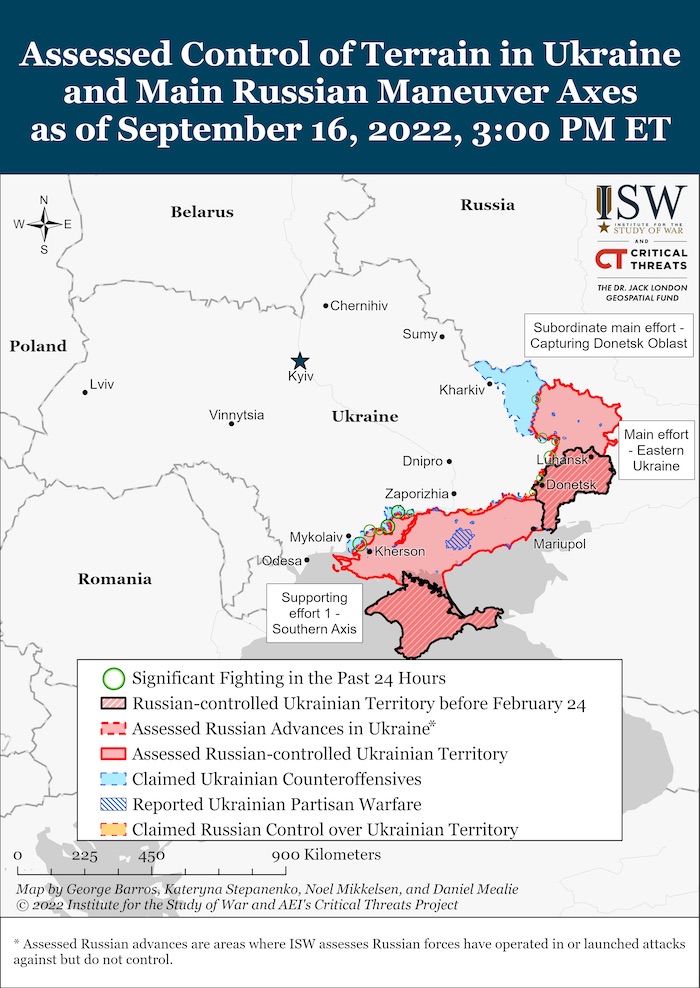
“Russian forces continue to focus their efforts on attempts to fully occupy the Donetsk oblast, organize defence and hold the temporarily captured territories, as well as disrupt the active actions of the Defense Forces in certain areas. It shells our positions along the contact line, carries out measures to regroup troops in certain directions, introduces reserves and conducts aerial reconnaissance.
There remains the threat of air and missile strikes throughout the territory of Ukraine. Over the past day, Russian forces launched 4 missile strikes, 24 airstrikes and 72 MLRS attacks.
Russian forces continue to attack the homes of civilians and objects of civil infrastructure, violating the laws and customs of war and the norms of International Humanitarian Law.
The infrastructure of more than 58 settlements was damaged by airstrikes, missile strikes and the use of anti-aircraft missiles. In particular, these are Kharkiv, Zolochiv, Druzhkivka, Siversk, Zakitne, New York, Veselyanka, Mariinka, Krasnohorivka, Poltavka, Mali Shcherbaky, Myrne, Velyke Artakove, Kryvyi Rih, Nikopol, Olhivske, Zaporizhzhia, Orihiv, Myrolyubivka, Ochakiv and Sukhyi Stavok.
The situation has not changed significantly in the Volyn, Polissya and Siverskyi directions.
In other directions, Russian forces fired from tanks, mortars and artillery, namely:
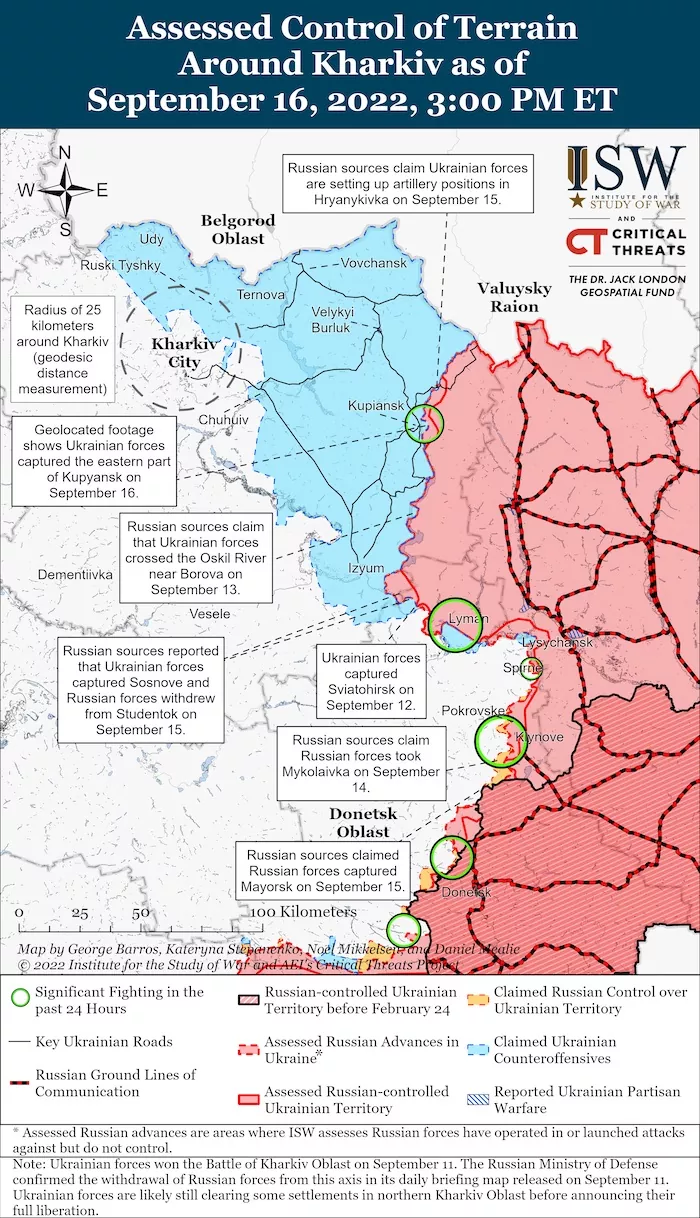
- in the Kharkiv direction, in particular from the territory of the Russian Federation, in the areas of Kudiyivka, Hoptivka, Strilecha, Vilkhuvatka, Anyskyne, Synyok, Kamyanka, Prystin and Dvorichna settlements;
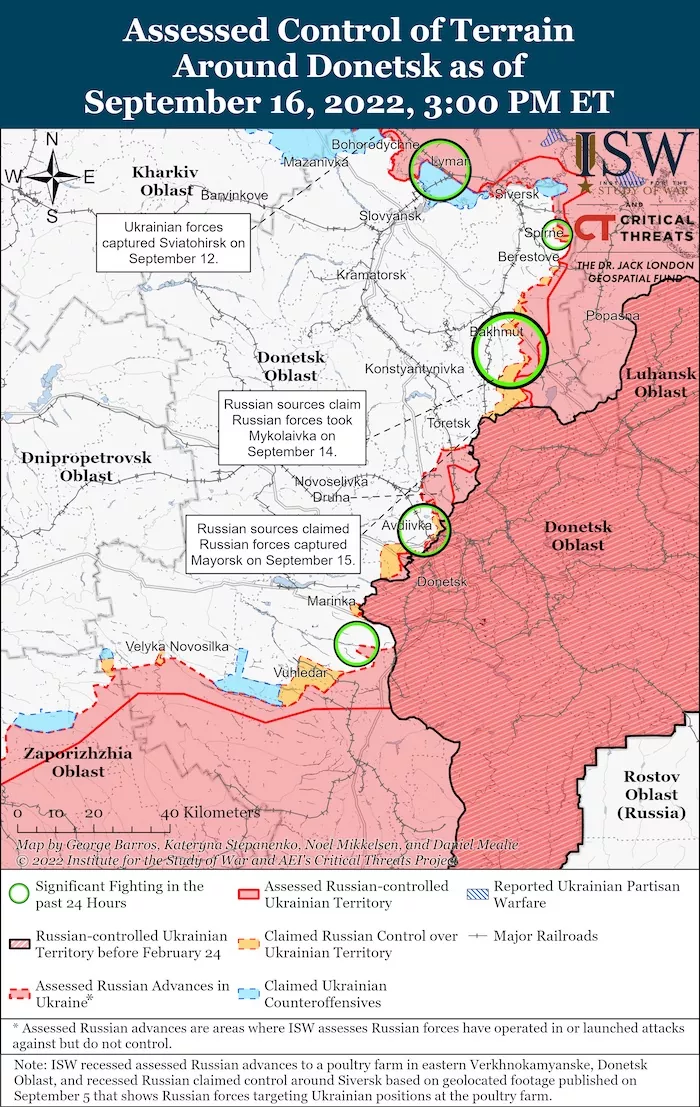
- in the Sloviansk direction – in the area of Horokhovatka and Bakhtyn settlements;
- in the Kramatorsk direction – Kryva Luka, Pyskunivka, Raihorodok, Stariy Karavan, Mykolaivka, Dronivka, Rozdil’ne, Siversk, Verkhnyokamianske, Sviatohirsk, Sosnove, Oleksandrivka and Yaremivka;
- in the Bakhmut direction – Bilohorivka, Rozdolivka, Vyimka, Odradivka, Soledar, Mykolaivka Druha, Bakhmut, Bakhmutske, Yakovlivka, Vesela Dolyna, Vesele and Mayorsk.
- Russian forces did not conduct active operations in the Avdiivka, Novopavlivka, and Zaporizhzhia directions. Avdiivka, Vesele, Opytne, Netaylovye, Zelene Pole, Poltavka and Novopil were affected by enemy artillery fire. [Yesterday, more than 30 settlements, including the city of Zaporizhzhia, were affected by the artillery fire of the occupiers.]
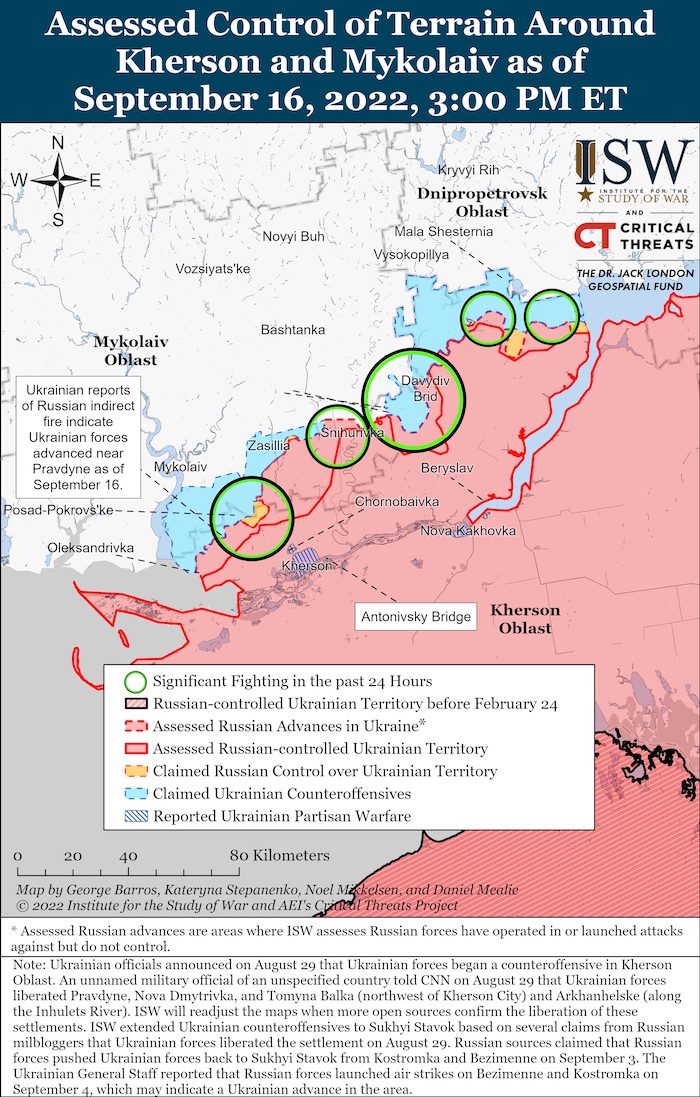
- In the Pivdenny Buh direction, the occupiers fired along the contact line. More than 26 settlements were affected by the fire. [Yesterday, the settlements of Pravdyne, Luch, Stepova Dolyna, Lyubomyrivka, Novohryhorivka, Myrne, Shyroke, Kiselivka, Pervomayiske, Bilohirka, Sukhy Stavok, Ivanivka, Bila Krynytsiya, Novopetrivka, Olhyne, Visokopillya, Novovoznysenske, and Osokorivka were under fire.]
Over the past day, units of the Defense Forces repelled enemy attacks and inflicted losses in the areas of the settlements of Bakhmut, Zaitseve, Avdiivka, Mykolaivka Druga and Novomykhailivka.
During the past day, the aviation of the Defense Forces struck the occupiers. It was confirmed that 9 areas of concentration of enemy manpower and military equipment, 3 strongholds, a rear command and control post and 2 positions of anti-aircraft missile systems were hit.
In addition, our air defence units destroyed one Su-24 aircraft, three cruise missiles and one enemy UAV in various directions.
Over the past day, the Missile Forces and artillery inflicted fire damage on the reserves of the occupiers in the areas of concentration and at the unloading station. The losses of the invaders are being clarified.
Significant losses among units of the so-called “Union of Donbas Volunteers” have been confirmed. Wounded representatives of the battalion of the specified illegal armed formation, which took part in the storming of Avdiivka, after being evacuated to Rostov-on-Don, were denied medical care in the hospital because they do not have the status of a regular military formation.
In the temporarily captured territories of the Zaporizhzhia region, the so-called head of the civil-military administration recently announced the strengthening of “sanctions” against patriotic Ukrainian citizens. Sensing the resistance movement, the occupiers and collaborators threaten people with imprisonment for providing support to representatives of the resistance movement, and activists are threatened with forced deportation to the self-proclaimed quasi-state entities on the territory of the temporarily occupied Donetsk and Luhansk regions, where such activities are punishable by death.
[Russian occupying forces continue to use educational institutions in the temporarily occupied territories to accommodate personnel and military equipment. Thus, according to available information, in the settlement of Khomivka, Luhansk region, military equipment is located on the territory of the local agrarian lyceum. The situation is the same in other occupied settlements of the Kharkiv (Podoly), Zaporizhzhia (Chernihivka), and Kherson (Pidstepne) oblasts.]
[Russian forces are introducing an enhanced security regime in the Pivdenny Buh direction. Local residents of some settlements of the Kherson region are prohibited from approaching the crossings.]
[As a result of the successful actions of the units of the Defense Forces, Russian forces daily suffer significant losses of personnel and military equipment, which significantly affects the psychological state of the occupiers. The servicemen of the units of Russian tactical unit operating in the Kherson region understand the futility of the offensive, so they complain that there are only two ways for them to return home: either through injury or death.]”
Military Updates
https://twitter.com/EuromaidanPress/status/1570941858036998147
Belarus extends military training once more, Ukrainska Pravda reports, citing monitoring group Belaruski Hajun, an independent Belarusian military monitoring media outlet. “Military training in Belarus has been extended again until at least 24 September. From 29 April the total duration of this extended training will be 21 weeks.”
Explosion rocks “LNR Prosecutor General’s Office” in Luhansk, Ukrinform reports. “In the centre of Luhansk, an explosion rang out in the building of the so-called “Prosecutor General’s Office” of the self-proclaimed Luhansk People’s Republic, as a result of which the “prosecutor general” was injured. Propaganda media, referring to the Russian invaders, report that unknown people carried an explosive device into the building.”
Deputy puppet governor of Berdiansk killed along with wife responsible for preparations for “referendum”, Ukrainska Pravda reports, citing Interfax. “Oleh Boiko, the deputy of the so-called “head of the administration” of the occupied city of Berdiansk, was killed together with his wife who chaired the election commission that prepared the so-called “referendum” [a trumped-up voting that would aim to legitimise the merging of the occupied territory with Russia].”
https://twitter.com/EuromaidanPress/status/1570918705248116736
https://twitter.com/EuromaidanPress/status/1570910904371265538
According to British Defence Intelligence, (last 48 hours):
- Ukraine continues offensive operations in the northeast of the country while Russian forces have established a defensive line between the Oskil River and the town of Svatove. Russia likely sees maintaining control of this zone as important because it is transited by one of the few main resupply routes Russia still controls from the Belgorod region of Russia.
- In addition, this line sits along the border of Luhansk Oblast, part of the Donbas, which Russia aims to ‘liberate’ as one of its immediate war aims. Any substantial loss of territory in Luhansk will unambiguously undermine Russia’s strategy.
- Russia will likely attempt to conduct a stubborn defence of this area, but it is unclear whether Russia’s front-line forces have sufficient reserves or adequate morale to withstand another concerted Ukrainian assault.
- Kremlin-linked Russian private military company Wagner Group has been conducting a campaign to recruit Russian convicts for service in Ukraine since at least July. Prisoners have been offered commutation of their sentences as well as cash incentives.
- This has been reinvigorated, with recently posted video highly likely showing Wagner owner Yevgeny Prigozhin making a recruitment pitch to prisoners. In the video, Prigozhin emphasises that he is only seeking ‘fighters for assault units’. Separately, Russian military academies are shortening training courses and bringing cadets graduation dates forwards. This is almost certainly socadets can be deployed to support the Ukraine operation. The impact of Russia’s manpower challenge has become increasingly severe
- The acceleration of officer cadets’ training, and Wagner’s demand for assault troops suggests that two of the most critical shortages within the military manning crisis are probably combat infantry and junior commanders.
Losses of the Russian army
As of Saturday 17 September, the approximate losses of weapons and military equipment of the Russian Armed Forces from the beginning of the war to the present day:
- Personnel – more than 54250 (+200),
- Tanks – 2202 (+3),
- Armoured combat vehicles – 4701 (+11),
- Artillery systems – 1306 (+4),
- Multiple rocket launchers –MLRS – 312 (+0),
- Air defence means – 168 (+0),
- Aircraft – 251 (+1),
- Helicopters – 216 (+0),
- Automotive technology and fuel tanks – 3571 (+21),
- Vessels/boats – 15 (+0),
- UAV operational and tactical level – 911 (+3),
- Special equipment – 121 (+0),
- Mobile SRBM system – 4 (+0),
- Cruise missiles – 236 (+3)
⚰️russia's combat losses in Ukraine as of September 17
▪ 54250 killed soldiers (+200)
▪ 4701 APV (+11)
▪ 2202 tanks (+3)
▪ 1306 artillery systems (+4)
▪ 251 aircraft (+1) and 216 helicopters
▪ 15 boats and cutters#StopRussia #StandWithUkraine pic.twitter.com/7veWK75BQZ— VoxUkraine (@voxukraine) September 17, 2022
Humanitarian
CNN’s United Nations source says that “a team from the UN’s human rights monitoring agency, the OHCHR, would be going to Izium and areas around it as soon as possible.” The war crimes investigation team may follow after that.
https://twitter.com/EuromaidanPress/status/1570732806665535490
Russian missiles hit hydraulic structures in Kryvyi Rih, Ukrinform reports. Hydraulic structures were destroyed in a missile attack on Kryvyi Rih. “Rescuers and emergency services are already eliminating the consequences of the strike. They do everything possible to prevent a man-made disaster. [Valentyn Reznichenko, Head of the Dnipropetrovsk Regional Military Administration], called it “yet another missile terror of the Russians”.
On September 14 and 15, the Russian air force attacked hydraulic facilities in Kryvyi Rih with Kinzhal and Iskander cruise missiles. As a result of the damage caused, the water level in the Inhulets River rose by 1-2 meters. As of this morning, the situation was stabilized, and water supply was restored in the city.”
Documenting Russia’s Destructive Impact on Food Storage in Ukraine, a statement by the US Department of State. “President Putin’s unjustified war against Ukraine puts millions around the globe at risk of increasing food insecurity. The Kremlin’s full-scale invasion of Ukraine, one of the world’s largest exporters of food, has led to the damage or outright destruction of many of Ukraine’s arterial roads, railways, ports, and food storage facilities that are essential to getting its agricultural goods to international markets. These actions guarantee that the pain of this war will also be felt by the world’s most vulnerable populations.
Today the Conflict Observatory, which is supported by the US Department of State, released an independent, first-of-its-kind, and detailed assessment of the devastating impact of Russia’s war on food storage sites in Ukraine. An estimated 15.7% of Ukraine’s crop storage facilities have been affected during the conflict — either due to seizure by Russia’s and Russia-aligned forces, or because facilities have been destroyed, damaged, or degraded to the point of compromising the stocks contained inside. The report notes that the intentional destruction of such facilities may constitute a war crime and a violation of the 1977 Additional Protocol I to the Geneva Conventions of 1949; the United States calls for further investigation through appropriate mechanisms. This report and other analyses are available online at the Conflict Observatory website.
Russia has exacerbated a global food security crisis, contributed to significant spikes in the cost of wheat, and forced a scramble to keep hungry and vulnerable populations fed. This summer, the United Nations and Türkiye mediated an agreement with Russia and Ukraine to allow safe grain exports from Ukraine’s Black Sea ports. Since August 1, that agreement has reduced global food prices and brought more than 2.7 million metric tons of grain to global markets. But if agricultural infrastructure within Ukraine continues to be damaged in the war, this progress on global food security will be endangered.
In 2022, Ukraine has become the scene of the worst mass-scale violence that Europe has seen in eight decades. Local hardships are compounded by its farmers’ strained ability to operate during wartime, replenish diminished food supplies, and prepare for planting seasons ahead. The ramifications of Russia’s aggression reverberate far outside Europe, and now affect the health and wellbeing of tens of millions of people worldwide.
Valentin #Vyhivsky: Eight years of torture in #Russia captivity for being #Ukrainian #FreeVyhivsky #Ukraine #LetMyPeopleGo #StandWithUkraine #StopRussiahttps://t.co/6U9ohZOsNh pic.twitter.com/UKboEXJgjQ
— Halya Coynash (@halyapuff) September 17, 2022
Environmental
Energoatom delivers 25 trucks with spare parts, chemicals and fuel to ZNPP, Ukrainska Pravda reports, citing Energoatom. ”Energoatom [Ukraine’s state company that runs all nuclear power plants in this country] has delivered 25 trucks with spare parts, diesel fuel and other materials to Enerhodar, the satellite city of the Zaporizhzhia Nuclear Power Plant (ZNPP). The materials are to be delivered to the Russian-held power plant.
A convoy of 25 Energoatom trucks passed enemy checkpoints and reached Enerhodar today, on 16 September 2022. [Energoatom] has delivered urgently needed spare parts to repair the damaged power lines and power units at the Zaporizhzhia NPP, which continues to be terrorised by Russian occupiers.
In addition, the emergency stock of chemicals needed for the ZNPP to operate has also been replenished. Most importantly, additional fuel has been supplied to ensure that diesel generators will be able to operate in the event of a power outage. Energoatom said that the company’s drivers delivered the cargo from various locations, including the Khmelnytskyi and Rivne NPPs, despite danger and difficulties.”
Legal
UN calls mass grave in Izium ‘shocking’, wants to send team, Ukrinform reports. “The UN High Commissioner for Human Rights” office said on Friday it wanted to send a team to Izium to verify a mass grave where more than 400 burials had been found after recapturing the city from Russia.
Our colleagues in Ukraine are following up on these allegations, and they are aiming at organising a monitoring visit to Izium to determine the circumstances of the death of these individuals, spokeswoman Elizabeth Throssell said, Barrons reports.
President of Ukraine Volodymyr Zelensky on Thursday blamed Russian forces for what he said was a “mass grave” discovered in the area.”
Bodies of Ukrainian soldiers with their hands tied found in Izium, Ukrinform reports. “The bodies of about 20 Ukrainian soldiers with their hands tied behind their backs have been found in a mass burial site in the city of Izium, Kharkiv region, recaptured from Russian occupiers.
Dmytro Lubinets, the Verkhovna Rada Commissioner for Human Rights, said this in a comment to journalists. We found about 500 graves where civilians were buried. So far, we have discovered a mass grave where up to 20 soldiers of the Armed Forces of Ukraine were buried, he said, adding that Ukrainian servicemen were found shot dead, with their hands tied behind their backs.”
Ukraine says over 1,000 people were tortured and killed in Russia-occupied areas, Interfax reports, Reuters reports. “The Ukraine parliament’s human rights commissioner on Friday said more than 1,000 people had been tortured and killed in Russian-occupied areas of Kharkiv region, Interfax news agency said. Dmytro Lubinets also said that in the coming days Ukrainian authorities would release the exact number of people found at a mass burial site in the city of Izium, the agency added.”
Fifty bodies of killed civilians were found in liberated territories of the Kharkiv region in a week, Ukrinform reports. “Over the past week, about 50 bodies of killed civilians were found in the liberated territories of Kharkiv region.
About 50 people were found this week in the territory of the Kharkiv region. We are not talking now about mass graves, National Police chief Ihor Klymenko said at a briefing, an Ukrinform correspondent reports.”
Ten torture chambers were found in the liberated Kharkiv region, Ukrinform reports, citing National Police Chief, Ihor Klymenko. “In the de-occupied territories of Kharkiv region, ten torture chambers have been discovered so far. Six of them were in the city of Izium, in the places of deployment of the Russian armed forces, where there were service members of the Russian Guard, employees of the FSB, representatives of the Russian police – ‘SOBR’ and other units. Two torture chambers
- in the city of Balaklia. One torture chamber – is in the village of Hrakovo, Chuhuiv district, and one torture chamber – is in the city of Vovchansk. We know for sure that people were tortured there, and we already have information about those who died there, Klymenko said.”
Russians fired 13 cruise missiles at Kryvyi Rih over three days, Ukrinform reports, citing the Kryvyi Rih Military Administration Head, Oleksandr Vilkul. “Thirteen cruise missiles over three days. Iskander, Kh, and the most expensive Russian missiles, Kinzhal, of which they have just several dozen. It looks like madness, but this is our reality, Vilkul wrote.
Vilkul stressed that Russian missile strikes were launched on civil infrastructure only, which had nothing to do with military objects. This is nothing else but undisguised terrorism, which is the only thing Russians are capable of, suffering one defeat after another on the battlefield, Vilkul added.”
389 children were killed, 756 children injured, 7,716 deported by foe forces, and 231 reported missing – the Office of the Prosecutor General of Ukraine reports as of September
- 2,500 educational establishments are damaged as a result of shelling and bombings,
- of them are destroyed fully. 34,441 crimes of aggression and war crimes and 15,807 crimes against national security were registered.
Support
https://twitter.com/EuromaidanPress/status/1570880453266927616
Pope says supplying weapons to Ukraine is morally acceptable for self-defence, Reuters reports. “Pope Francis on Thursday said it was morally legitimate for nations to supply weapons to Ukraine to help the country defend itself from Russian aggression.”
According to the Memorandum on the Delegation of Authority Under Section 506(a)(1) of the Foreign Assistance Act of 1961, on September 15th, 2022, the United States of America President Joe Biden delegated to the Secretary of State of the United States of America Anthony Blinken US Department of State the authority to a drawdown of up to $600 million in defense articles and services of the US Department of Defense (DoD), and military education and training, to assist Ukraine.
“Together with our Allies and partners, we are delivering the arms and equipment that Ukraine’s forces are utilizing so effectively as they continue their successful counter-offensive against Russia’s invasion. President Biden has been clear we will support the people of Ukraine for as long as it takes.
Pursuant to a delegation of authority from the President, I am authorizing our twenty-first drawdown of US arms and equipment for Ukraine since September 2021. This $600 million drawdown includes additional arms, munitions, and equipment from US Department of Defense inventories. This drawdown will bring the total US military assistance for Ukraine to approximately $15.8 billion since the beginning of this Administration.”
United States preparing two NASAMS systems for delivery to Ukraine – Pentagon, Ukrinform reports. “In the coming months, the United States will deliver to Ukraine two NASAMS air defence systems. Pentagon Press Secretary, General Patrick Ryder stated this at a press briefing at the US Department of Defense.”
More rocket launchers MARS II and Dingo for Ukraine, German Minister of Defence states. “At the 2022 Bundeswehr Conference in Berlin, Lambrecht announced further support payments to Ukraine. Accordingly, the Bundeswehr will deliver two more MARS II multiple rocket launchers with 200 rockets, combined with training by the Bundeswehr. The Bundeswehr is also supplying 50 Dingo all-protection transport vehicles.
Lambrecht assured that these deliveries did not weaken the Bundeswehr. She was also confident that in the course of the ring exchange with Greece, 40 Greek infantry fighting vehicles of Soviet design would go to Kyiv and 40 Marder infantry fighting vehicles from German industrial stocks to Athens.
In her speech, the minister made it clear that these times of the Ukraine war demanded new answers, also for the Bundeswehr. “Because we are in the midst of a security policy turning point. That’s exactly what we want to talk about today and tomorrow.” Germany must reconsider its responsibility in the world, and its military strength and act accordingly.
Now it is about concrete steps toward a fully operational Bundeswehr. What Germany needs is a Bundeswehr that can move units and formations at short notice. Every individual in the Bundeswehr must devote himself to this goal much more than before. “That means a turning point,” says Lambrecht.
We have to be prepared for the worst case – and not for the best, [Inspector General of the Bundeswehr, General Eberhard] Zorn made unmistakably clear.”
Sanctions hamper Russia’s ability to make advanced weapons, NATO says, Reuters reports. “Western sanctions are starting to hurt Russia’s ability to make advanced weaponry for the war in Ukraine, a top NATO military adviser told Reuters on Friday, although he added that Russian industry could still manufacture “a lot of ammunition”.
They are hampered more and more by the sanctions – because some of the components that they need for their weapons systems come from the Western industry, Rob Bauer, a Dutch Admiral who chairs NATO’s Military Committee, said in an interview. We now see the first serious signs of that in terms of their ability to produce, for example, the replacement of cruise missiles and more advanced weaponry, he added.”
New Developments
https://twitter.com/EuromaidanPress/status/1570888059318861824
- Putin reduced the main task of the war to the seizure of Donbas, Ukrainska Pravda reports, citing. RIA Novosti. “The plan is not subject to adjustment. The General Staff makes operational decisions during the operation. Something is considered a key, the main goal, and the main goal is the liberation of the entire territory of Donbas; this work continues despite attempts at a counteroffensive by the Ukrainian army.”
- Zelensky sees no early end to war. Reuters “The outcome of the war with Russia, now in its seventh month, hinged on the swift delivery of foreign weapons to his country. […] He lauded Ukraine’s rapid counter-offensive but played down any suggestion that the war was entering some kind of end game. It’s early to talk about an end to this war, he said.”
- Putin is outraged that Ukraine wants to win on the battlefield, Ukrainska Pravda “I know your position on the conflict in Ukraine. We will do everything to end it as soon as possible. Unfortunately, the opposite side, the leadership of Ukraine, has said it refuses to participate in the negotiation process. It declared that it wanted to achieve its goal by military means, as they say, on the battlefield, [President Putin said at a meeting with Indian Prime Minister Modi.]”
- Russia says Germany ‘crossed’ red line in arms supply to Ukraine, Fox News “Russia’s ambassador to Germany Sergey Nechayev told state-owned media on Friday that Germany had “crossed” a red line by proving arms to Ukraine. Supplying the Ukrainian regime with German weapons is not only against Russian servicemen but also against the Donbas civilians, Nechayev told RT. It is certainly the red line which the German authorities should not have crossed. The ambassador’s comments come one day after German defence officials pledged weapons and equipment for Ukraine as it faced backlash at home and abroad for not doing more.”
- Kyrgyzstan reports heavy fighting with Tajikistan, 24 people were killed, Reuters “Kyrgyzstan reported “intense battles” with Central Asian neighbour Tajikistan on Friday and said 24 people had been killed in the latest outbreak of violence to hit the former Soviet Union. Both countries host Russian military bases. Earlier on Friday, Moscow urged a cessation of hostilities. The clashes come at a time when Russian troops are fighting in Ukraine and a new ceasefire appears to be holding between former Soviet states Armenia and Azerbaijan.”
- S. envoy says no plans to meet Russians at United Nations, Reuters reports. “The United States has no plans “at this time” to meet with Russian diplomats next week during the annual United Nations gathering of world leaders, US Ambassador to the United Nations Linda Thomas-Greenfield said on Friday. Russian Foreign Minister Sergei Lavrov is due to travel to New York for the high-level UN General Assembly meeting. We will be having meetings with the Ukrainians. There are no plans at this time to have meetings with the Russians. They have not indicated that they have an interest in diplomacy, Thomas-Greenfield told reporters.”
- Decisions made for further de-occupation: Zelensky holds a meeting of Staff of Supreme Commander-in-Chief, Ukrinform reports, citing the press service of the Head of State. “President of Ukraine Volodymyr Zelensky held yet another meeting of the Staff of the Supreme Commander-in-Chief on Friday, September 16. The participants of the meeting considered further steps for the de-occupation of the territories of Ukraine and made the necessary decisions. Separately, they focused on the material-technical support of the defence forces and updated the list of weapons necessary for the continuation of the operation to liberate Ukrainian lands.”
- The United States to continue the discussion on recognizing Russia as a state sponsor of terrorism, Ukrinform “The sanctions against the Russian Federation, which have been imposed by the United States, have the same effect as recognizing the country as a state sponsor of terrorism, but the United States will continue to discuss this issue at the internal level. The relevant statement was made by the United States Ambassador to Ukraine Bridget A. Brink.”
- Hungary’s Orban aims to block extension of EU’s Russia sanctions, report says, Reuters “Hungarian Prime Minister Viktor Orban expects European Union leaders to start talks on extending sanctions on Russia in the autumn but Budapest would try to block the move, Radio Free Europe/Radio Liberty reported, citing unidentified sources.”
- In Slovakia, a large part of the population supports Russia in the fight against Ukraine, Latvia Post “The poll shows that 50% of Slovaks support a Russian victory, while about a fifth of respondents would definitely like a Russian victory. Only a third of the respondents indicated that they were inclined to support Ukraine. Along with Bulgaria, Slovakia has long been one of the most pro-Moscow member states of the European Union.”
Kremlin rejects Zelenskyy's idea to reopen Russian ammonia exports in exchange for Ukrainian PoWs – Reutershttps://t.co/90WaxoN4Pd
— Euromaidan Press (@EuromaidanPress) September 16, 2022
Assessment
- On the war. [Paragraph]
map source: https://www.understandingwar.org/backgrounder/russian-offensive-campaign-assessment-september-16*
The Institute for the Study of War has made the following assessment as of 16 September 2022:
Eastern Ukraine: (Vovchansk-Kupiansk-Izium-Lyman Line) Ukrainian forces captured all of Kupiansk City on September 16, continuing offensive operations east of the Oskil River. […] Geolocated footage confirms that Ukrainian forces established positions on the east bank of the Oskil River in Kupiansk. Russian forces will likely struggle to hold positions in eastern Kharkiv Oblast and northern Luhansk Oblast as Ukrainian forces establish more positions on the east bank of the Oskil River, the line at which Ukrainian forces had halted on September 11. ISW has previously assessed on September 13 that Russian forces are likely too weak to prevent further Ukrainian advances along the entire Oskil River if Ukrainian forces choose to resume offensive operations. Luhansk People’s Republic
(LNR) People’s Militia sources additionally claimed that Ukrainian forces struck Nyzhnia Duvanka (20km north of Svatove, Luhansk Oblast) with HIMARS.
Ukrainian forces reportedly shelled targets in Valuyki, Belgorod Oblast, Russia, overnight on September 15-16. Belgorod Oblast Governor Vyacheslav Gladkov claimed that Ukrainian rounds struck a power substation in central Belgorod, and footage depicts damaged buildings and cars. A Russian source claimed that Ukrainian forces fired over 20 rounds at Valuyki from positions 20km southwest of the city, which is within Ukrainian tube artillery range. The attack appears to have struck a base of the Russian 3rd Motorized Rifle Division just north of Valuyki. […]
Valuyki is situated on a critical Russian rail line to northern Luhansk Oblast. Ukrainian forces have cut Russian Ground Lines of Communication (GLOCs) through Kharkiv Oblast, likely forcing Russian forces to redirect logistics from the large bases and concentration points around Belgorod City through the Valuyki rail line. Sustained damage to this rail line would severely complicate Russian logistics supporting the Russian defence of Luhansk Oblast and eastern Kharkiv Oblast. A Russian source stated that the Luhansk People’s Republic (LNR) 206th Regiment is defending Russia itself near Valuyki, indicating Russia is deploying proxy forces to screen Russian logistics – and additionally indicating the increasing Russian reliance on proxy forces for tasks even in Russia. Gladkov and other sources stated that Ukrainian forces shelled additional Russian settlements on and near the Kharkiv-Belgorod Oblast border.
Russian forces continued to defend against Ukrainian counteroffensive operations in northeastern Ukraine. The Ukrainian General Staff reported that Russian forces shelled Pristyn, northeast of Izium on the west bank of the Oskil River, likely to prevent Ukrainian forces from establishing another bridgehead over the river. […] Geolocated images from September 15 confirm that Russian forces maintain positions in Lyman. However, the Ukrainian General Staff reported that Russian forces shelled Lyman, indicating that Ukrainian forces may have made some gains around the settlement.
Ukrainian sources confirmed previous reports that Ukrainian forces struck Russian rear positions in Luhansk Oblast on September 15. The Ukrainian General Staff reported on September 16 that Ukrainian forces struck a Russian concentration area causing many casualties among Russian servicemen in Perevalsk, Luhansk Oblast, likely on September 15. Geolocated images show the aftermath of a Ukrainian strike on a LNR base in Kadiivka, also likely from September 15. ISW reported on Russian claims of a series of Ukrainian strikes in rear Luhansk Oblast, including Perevalsk and Kadiivka, on September 15.
Southern Ukraine: (Kherson Oblast) Ukrainian military officials are continuing their operational silence regarding the progress of the southern counteroffensive, noting that fighting continued along the southern axis without reporting any territorial changes. Ukraine’s Southern Operational Command reported that Russian forces continued counter-battery fire against Ukrainian positions and attempted to regroup frontline troops. The Ukrainian government and local sources reported mounting Russian casualties and the deployment of low-quality Russian units along the Kherson front. Local Russian media in the city of Ufa reported that members of the Shaymuratov volunteer battalion, operating around Mykolayiv, have not communicated with Ufa residents for over a week. […].
Ukrainian forces struck Russia’s occupation headquarters in Kherson, likely using HIMARS, on September 16. Local social media reported that five Ukrainian rockets struck the Kherson Administrative Court building, which houses Russia’s occupation administration and depicted heavy damage. [….] Ukraine’s Kherson Oblast Military Administration Advisor Serhiy Khlan confirmed that Ukrainian forces struck Russian occupation authorities on September 16 and destroyed a Rosgvardia base in the city center on an unspecified date, warning civilians in occupied Kherson to stay away from Russian positions. […]
Ukrainian military officials stated that Ukrainian forces continued their interdiction campaign on September 16, targeting Russian ground lines of
communication (GLOCs) across the Inhulets and Dnipro Rivers and notably disrupting Russian food and water supplies. GUR reported that Ukrainian strikes have cut off Russian troops in Kherson from their food and water supplies and that an unspecified Russian Air Assault unit based in Kakhovka (in Russian rear areas on the left bank of the river) cannot supply its frontline units. The Ukrainian General Staff claimed that Ukrainian strikes are severely degrading Russian morale. Ukraine’s Southern
Operational Command reported that Ukrainian missile and artillery units struck Russian concentrations in Beryslav, Darivka, and Stara Zburyvka, as well as a pontoon crossing in the Kozatske Raion.
Ukrainian and Russian sources indicated three areas of kinetic activity on September 16: northwest of Kherson City, near the Ukrainian bridgehead over the Inhulets River, and south of the Kherson-Dnipropetrovsk Oblast border west of Vysokopillya.
- Ukraine’s General Staff reported
Russian forces shelled Ukrainian positions in Pravdyne, indicating Ukrainian forces have likely at minimum entered the town. Geolocated footage depicted a DNR military correspondent in
Oleksandrivka (directly west of Kherson) on September 16, confirming that Russian forces retain control of the town despite recent Ukrainian assaults. Imagery released by pro-Russian telegram channels confirmed that Russian forces repelled an assault by Ukrainian naval infantry in the Andriivka area (near the Ukrainian bridgehead over the Inhulets River) on September 16. Russian milbloggers reported that Ukrainian forces continue to deploy troops and equipment to the Andriivka and Bilohirka areas but that rising water levels in the Inhulets River due to Russian strikes on dams in Kryvyi Rih have blocked half of the Ukrainian crossing points. Ukraine’s General Staff reported that Russian forces shelled Novopetrivka (south of Kryvyi Rih) on September 16, suggesting that Ukrainian forces occupy the town.[…]
Russian President Vladimir Putin appeared to threaten increased attacks on Ukrainian civilian infrastructure if reported Ukrainian attacks on Russian military positions in Russian Federation territory continue. Putin
said that Russia has been “rather restrained in our response” to Ukrainian “terrorist acts [and] attempts to damage our civilian [sic] infrastructure” in a question-and-answer session with reporters following the Shanghai Cooperation Organization meeting on September 16. He continued “more recently, the Russian armed forces have dealt a couple of sensitive blows” that are “warning shots,” and threatened that more serious attacks could follow. Putin did not explicitly refer to the reported Ukrainian strikes on the base of the Russian 3rd Motorized Rifle Division near Valuyki that occurred on September 16, nor did he make clear which
Russian actions he was referring to. But Russian forces have increased attacks on civilian infrastructure throughout Ukraine over the past several weeks as Russian media personalities increase explicit calls for such attacks.
Putin’s comments are likely in part a response to criticism by Russian milbloggers, who attacked the Kremlin for failing to protect Russian territory and for failing to respond adequately. One milblogger asked if the Kremlin still regards Belgorod Oblast as part of Russia, part of the “special military operation” zone, or part of Ukraine. Another blamed the reported Ukrainian attack on Valuyki on the so-called “regrouping” of Russian forces (referring to the initial language the Russian Ministry of Defense used to describe the rout of Russian forces in Kharkiv Oblast) and warned that another “regrouping” could allow Ukrainian forces to attack other critical Russian areas. Putin has increasingly shown a determination to appease the milbloggers and the constituencies they speak to and on behalf of, even at the expense of the uniformed Russian military and the Russian Ministry of Defense.
The Ukrainian Resistance Center warned on September 16 that Russian forces are planning to conduct false flag attacks against the civilian population in Russian-occupied Ukraine and urged Ukrainians in occupied areas to avoid public places between September 17 and September 20. The Resistance Center suggested that such false flag attacks could be attempts to “divert the attention of the world community from the defeat in Kharkiv and the discovery of Russian war crimes” in liberated areas.
Key Takeaways
- The discovery of mass graves and torture chambers in liberated Izium confirm previous ISW assessments that the Bucha atrocities were emblematic of Russian activities in occupied areas rather than an anomaly.
- Russian President Vladimir Putin apparently threatened to expand Russia’s attacks on civilian Ukrainian infrastructure if Ukraine continues reported attacks on military facilities in Russia.
- The Ukrainian Resistance Center warned that Russian forces may conduct false flag attacks in occupied areas between September 17 and September 20.
- Ukrainian forces captured all of Kupiansk City on September 16, continuing offensive operations east of the Oskil River.
- Ukrainian forces reportedly shelled targets in Valuyki, Belgorod Oblast, Russia, overnight on September 15-16.
- Ukrainian forces struck Russia’s occupation headquarters in Kherson, likely using HIMARS, and are continuing ground maneuvers in three areas of Kherson Oblast as part of the ongoing southern counteroffensive.
- Russian administrative officials are rallying around Chechen leader Ramzan Kadyrov’s call for “self-mobilization” at a local level to provide additional forces to the Russian military.
- Forced Russian mobilization campaigns are likely depleting male populations in parts of the claimed territory of the Russian proxy Donetsk and Luhansk People’s Republics (DNR and LNR) along the front
- Immediate and coordinated Russian information responses suggest that
Ukrainian partisans may not be responsible for the September 16 assassination of the Luhansk People’s Republic (LNR) Prosecutor General and his deputy.“
- Consequences and what to do?
In the ‘Great Game’ of Central Asia, China’s Leader Seeks the Advantage, The New York Times reports. “Xi Jinping’s visit to Central Asia this week sheds a light on his country’s efforts to increase its sway in the vast, resource-rich region once considered Russia’s domain. For Beijing, the pomp and fanfare that greeted Mr. Xi, as well as the effusive rhetoric of his counterparts, served to show that China is not isolated despite coming under pressure from the United States and much of the West for its human rights violations and threats to Taiwan. Such messaging by China’s propaganda apparatus carries more urgency as Mr. Xi prepares to extend his power and elevate his authority at a Communist Party congress next month.
In the narrative presented by Beijing, Mr. Xi is the reliable global leader that other countries look to for support in a world made turbulent by American hegemony. Even Vladimir V. Putin, Russia’s autocratic leader, seemed almost deferential in his meeting with Mr. Xi on Thursday, acknowledging that China had “questions and concerns” about Russia’s war in Ukraine.
But the pageantry also demonstrated China’s growing sway in Central Asia — a vast, resource-rich region of mountains and steppe once considered Russia’s domain, where great powers have long vied for influence. […] Beijing has long seen Central Asia as a critical frontier for the country’s trade expansion, energy security, ethnic stability and military defense. China has built railroads, highways and energy pipelines and expanded educational exchanges throughout the region.
While the former Soviet republics of Central Asia are still connected to Moscow by roads, rail lines and other infrastructure, their trade is now increasingly with China. The end of the American military presence in Afghanistan last year reduced the role of the United States as a geopolitical counterweight to Moscow and Beijing. Mr. Putin’s subsequent invasion of Ukraine, followed by a series of humiliating defeats of the Russian army, may give Beijing room to gain an edge.
One complication for Mr. Xi’s ambitions in the region is his alignment and personal bond with Mr. Putin, the Russian leader whose invasion of Ukraine drew unease in the region. Mr. Xi has often described Mr. Putin as his “best friend,” and in February he hailed a friendship that had “no limits.” On Thursday, Mr.
Xi appeared to distance himself, at least in public, saying nothing about Moscow’s position on Ukraine and offering reassurances to Central Asian leaders that China would support their sovereignty. […]
William C. Kirby, a Harvard professor of Chinese history, said that Chinese influence in Central Asia may now be reaching levels not seen since the peak of the ancient Silk Road during the Tang dynasty, which ruled China from 618 to 907.
Russia has been the main threat to the independence of Central Asian republics since Peter the Great, the czar in the early eighteenth century. China seems less threatening right now by comparison. The greatest danger for them is to become once again drawn too tightly to Moscow’s orbit, Mr. Kirby said.”
In Ukraine, more evidence of Russian atrocities piles up, the Editorial Board of The Washington Post reports. “When Russian forces retreated last week from most of Ukraine’s Kharkiv region, they left behind tanks and a howitzer — and disturbing reports of violence. In the village of Zaliznychne, one woman described burying the bodies of two men killed after they kept lights on past curfew. In other towns, Russian shelling destroyed civilian targets, including schools and hospitals. Officials from the city of Izium claim at least 1,000 civilians were killed and 80 percent of the city destroyed during a six-month occupation.
Grisly evidence is emerging. On Thursday, Ukraine’s chief police investigator announced the discovery of a mass burial site near Izium, containing more than 400 bodies. An Associated Press video showed hundreds of graves lining the forest, marked with numbers and simple wooden crosses. While many of the victims were killed by shelling and airstrikes, some were reportedly found with their necks and hands tied, suggesting the execution of prisoners.
These horrifying allegations follow a sad pattern. From Chechnya to Syria, Russia has a record of waging war with a brutal disregard for human rights and civilian life. In Ukraine, perhaps the most infamous example is what happened in the city of Bucha, near Kyiv: After Russian troops retreated in late March, more than 450 bodies were found, and the majority of the victims had been tortured, shot or bludgeoned to death. The images spurred global outrage, as did reports of systematic sexual violence and rape.
Since then, evidence has mounted suggesting Russia has committed atrocities.
A database from the Associated Press and Frontline has documented 430 “incidents involving potential war crimes” across Ukraine, including attacks on civilians, food and water facilities and medical infrastructure.
In the coming weeks, the world will learn more about what Ukrainian civilians in the Kharkiv area experienced. Towns such as Izium have been cut off from the internet, phone signals and electricity for months, with little information escaping about conditions and treatment. The Ukrainian government has dispatched investigators and prosecutors to the region to gather evidence, and international investigations will no doubt follow suit. It is imperative reports of violence are quickly and carefully documented. Collecting information in real-time — crucial in such situations — will require both resources and coordination.
Russia leaves death everywhere. And it must be held accountable for it, Ukrainian President Volodymyr Zelensky said in a video address Thursday night. Every day, Russian President Vladimir Putin’s senseless war in Ukraine claims more lives and causes irreparable suffering. There must be an urgent, thorough investigation into alleged crimes against civilians, followed by sincere efforts to prosecute perpetrators and hold them accountable. Anything less would represent a grave
injustice for victims and survivors — and would send an unacceptable signal to Mr. Putin that his troops can commit atrocities with impunity.”
Putin tells Europe: if you want gas then open Nord Stream 2, Reuters reports.
“The bottom line is, if you have an urge, if it’s so hard for you, just lift the sanctions on Nord Stream 2, which is 55 billion cubic metres of gas per year, just push the button and everything will get going, Putin said.
Nord Stream 2, which lays on the bed of the Baltic Sea almost in parallel to Nord Stream 1, was built a year ago, but Germany decided not to proceed with it just days before Russia sent its troops into Ukraine on Feb. 24. European gas prices more than doubled from the start of the year amid a decline in Russian supplies. This year’s price surge has squeezed struggling already consumers and forced some industries to halt production.
Europe has accused Russia of weaponising energy supplies in retaliation for Western sanctions imposed on Moscow over its invasion of Ukraine. Russia says the West has launched an economic war and sanctions have hampered Nord Stream 1 pipeline operations.”
Germany takes control of Russian-owned refinery amid energy crisis, Reuters reports. Germany took control of a major Russian-owned oil refinery on Friday, risking retaliation from Moscow as Berlin strives to shore up energy supplies and meet its European Union commitment to eliminate Russian oil imports by the end of the year. The economy ministry said it was putting a unit of Russian oil firm Rosneft under the trusteeship of the industry regulator and taking over the business Schwedt refinery, which supplies 90% of Berlin’s fuel.
This is a far-reaching energy policy decision to protect our country, Chancellor Olaf Scholz told a news conference to present the government’s plans to put the Schwedt refinery under the control of the Federal Network Agency regulator. […] Russia, we have known for some time, is no longer a reliable energy supplier, Scholz said.”We did not take this decision lightly, but it was unavoidable. […]
The Schwedt refinery has posed a dilemma for Berlin for several weeks, as it has received all of its crude from Russia, but Germany is resolved to eliminate imports of oil from Russia by the end of the year under European Union sanctions. Taking over Schwedt, however, risks retaliatory measures from Moscow. Scholz said Germany had gamed out a possible sudden stop in crude supplies from Russia, adding: That is why we are prepared.
A policy document released by Berlin on Friday showed that it is in talks with the government of Kazakhstan on securing oil deliveries for Schwedt.
Poland said earlier this year that ending Russian ownership of the refinery was a condition for potentially supplying it with seaborne oil via a terminal in Gdansk and via Polish pipelines to replace Russian crude.”
Hans Petter Midttun: My assessment will be published as a separate article. In it, I will present seven arguments for why a humanitarian intervention in Ukraine is in NATO’s interest.
In my humble opinion, the Alliance has failed to stop a war that it could – and should – have stopped. Furthermore, it was committed to stopping it. Its inaction has not only undermined NATO’s credibility and thus our collective security, but also caused enormous suffering and destruction, European recession, increased global poverty and hunger, radicalization and increased extremism, and reduced Euro-Atlantic security and stability
Several have claimed that my recommendation for humanitarian intervention in Ukraine is irresponsible and will lead to a war between NATO and Russia.
In the article, I argue why an intervention has been the only responsible course of action since 2014.
The recent atrocities discovered in the Kharkiv Oblast strengthen my arguments. These are not only a reminder of Russia’s past war crimes but also serve as an acknowledgement that its atrocities have been ongoing in Ukraine for 3132 days. The situation in the occupied territories is equally horrific. The liberation of these regions is a matter of the greatest urgency, and a democratic nation is calling on the democratic, free world for help.
In the article, I argue that the “Alliance must convince Russia that it is prepared to defend international law, democracy, our common values, and principles and, not least, European security and stability. We need to convey a message Russia truly understands: We are willing to fight for what we believe in. Only then will Russia consider peace. More words will not help. Tangible actions are needed to convince Russia we mean business.
As of today, we have little or no influence on how the war will develop. NATO today allows Russia and Ukraine to decide on European security and stability alone. We allow Russia to undermine NATO’s credibility, undermine Europe and impose tremendous costs on the international community.
European security is today only linked to Ukrainian courage, professionalism, and resilience. This is both unreasonable, unacceptable, reprehensible and highly irresponsible.

